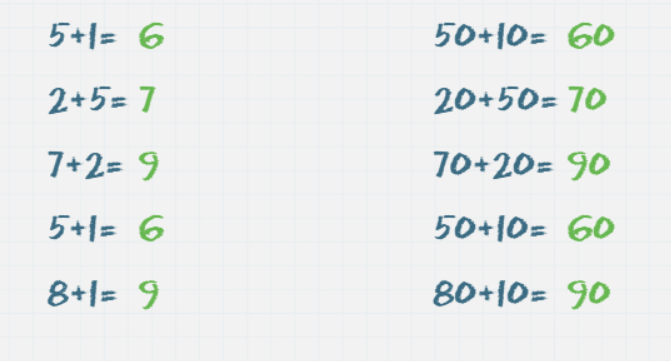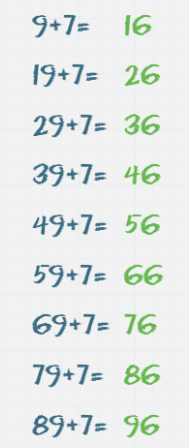What? How could addition in a column possibly hurt a child?!
Addition in a column is actually a convenient way to calculate for someone who has understood the way we write numbers. For a child who has not yet understood it in depth, addition in a column is a way to solve the exercise without understanding anything!
If I see it that way
This is a beautiful way to calculate the result

But if I see it that way, thoughts are running through my head
Why do we do this? How is it related to the exercise? Is the result I arrived at correct? Why?

What is the child experiencing and understanding?
In the latter case, the child experiences enormous frustration. The main thing the child understands subconsciously is “Math is not for me.” It is possible to solve exercises without understanding – that’s how math is.”
From experience with many children, at this stage psychological barriers develop that are not yet visible. They usually break out in learning multiplication tables or fractions.
So how do you know if my child is hurt?
It’s just like asking if my child understands or solves technically without understanding.
Over the years, I have discovered a good way to identify if the child understands how a number is built.
I give him to solve these exercises. Row by row in order.

And I see if he calculates the right exercise or for example in the first row if he understands that if 5 + 1 equals 6 then 50 + 10 equals 60 and therefore solves it right away.
If he calculates each exercise again, it is a sign that he has not yet internalized the decimal system for writing numbers.
Then I give him to solve exercises like this in a column

And I see if at some point he understands in this example that the units digit will always be 6
If he calculates each time again, it is a sign that he has not yet internalized the decimal system for writing numbers.
What percentage of children are affected?
In my rough estimate, at least 25% of children learn addition in a column before they are ready to understand the decimal system.
The thought that all children are ready to understand how a number is built at the same age is completely crazy.
For example, at a university in the United States, they checked at what age children can solve an exercise like 4 + 3 without counting on their fingers. And they found that half of the children in second grade are still not ready for that.
Another example, I asked Bard, Google’s AI, to assess the readiness of children to start learning math, and these are the results:
Age | Percent of Children Ready to Learn Mathematics
——- | —————————————-
3-4 | 20%
5-6 | 50%
7-8 | 70%
9-10 | 80%
11-12 | 90%
13-14 | 100%
What to do if my child solves the exercises without understanding?
All children will understand in their own time how a number is built, even if they do not learn mathematics.
If possible, wait with solving exercises in a column and in the meantime solve only horizontally.
If you must accelerate the process, there are a few options:
I hope I was helpful,
Ami.